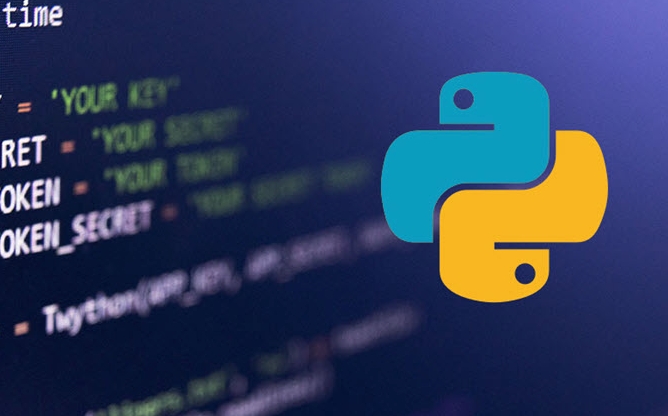如何连接到Python中的PostgreSQL数据库?
安装psycopg2-binary库:使用pip install psycopg2-binary进行安装;2. 导入psycopg2并建立连接:提供host、database、user、password和port参数连接数据库;3. 使用cursor执行SQL查询:通过cursor.execute()执行语句并获取结果;4. 安全关闭连接:在finally块中关闭cursor和connection;5. 推荐使用环境变量存储敏感信息:避免硬编码用户名和密码;6. 使用contextmanager管理连接:确保资源正确释放;7. 可选使用SQLAlchemy:通过create_engine连接,适用于ORM场景。连接PostgreSQL数据库的最常用方法是使用psycopg2库,需正确配置连接参数并妥善管理连接生命周期,最终实现安全、稳定的数据库交互。

To connect to a PostgreSQL database in Python, the most common and reliable way is using the psycopg2 library. Here's how to do it step by step.

✅ Install psycopg2
First, install the psycopg2 package using pip:
pip install psycopg2-binary
psycopg2-binaryis recommended for development and testing. For production, consider buildingpsycopg2from source.
✅ Import and Connect
Use the following code to establish a connection:
import psycopg2
try:
connection = psycopg2.connect(
host='localhost',
database='your_database_name',
user='your_username',
password='your_password',
port='5432'
)
print("Connection successful!")
# Create a cursor object
cursor = connection.cursor()
# Execute a test query
cursor.execute("SELECT version();")
db_version = cursor.fetchone()
print(f"PostgreSQL version: {db_version}")
except Exception as error:
print(f"Error connecting to PostgreSQL: {error}")
finally:
# Close the connection
if connection:
cursor.close()
connection.close()
print("PostgreSQL connection closed.")? Connection Parameters Explained
You’ll need these details:

- host: Usually
localhostor an IP address (e.g., for remote DBs) - database: Name of your PostgreSQL database
- user: Your PostgreSQL username (often
postgres) - password: Password for the user
- port: Default is
5432
? Tip: Store credentials securely using environment variables or config files instead of hardcoding.
Example using environment variables:
import os
import psycopg2
connection = psycopg2.connect(
host=os.getenv('DB_HOST', 'localhost'),
database=os.getenv('DB_NAME'),
user=os.getenv('DB_USER'),
password=os.getenv('DB_PASS'),
port=os.getenv('DB_PORT', '5432')
)? Using a Connection Context (Recommended)
To avoid forgetting to close resources, use context managers or wrap in functions:
from contextlib import contextmanager
@contextmanager
def get_db_connection():
conn = None
try:
conn = psycopg2.connect(
host='localhost',
database='your_db',
user='your_user',
password='your_pass',
port='5432'
)
yield conn
except Exception as e:
if conn:
conn.rollback()
raise e
finally:
if conn:
conn.close()
# Usage
with get_db_connection() as conn:
cur = conn.cursor()
cur.execute("SELECT * FROM your_table LIMIT 5;")
print(cur.fetchall())? Alternative: Using SQLAlchemy (for ORM or advanced use)
If you're using SQLAlchemy, here's how to connect:
from sqlalchemy import create_engine
engine = create_engine('postgresql psycopg2://user:password@localhost:5432/your_db')
with engine.connect() as conn:
result = conn.execute("SELECT version();")
print(result.fetchone())Install with: pip install sqlalchemy psycopg2-binary
Basically, psycopg2 is the go-to for raw PostgreSQL access in Python — lightweight, fast, and well-documented. Just keep your credentials safe and always close connections.
以上是如何连接到Python中的PostgreSQL数据库?的详细内容。更多信息请关注PHP中文网其他相关文章!

热AI工具

Undress AI Tool
免费脱衣服图片

Undresser.AI Undress
人工智能驱动的应用程序,用于创建逼真的裸体照片

AI Clothes Remover
用于从照片中去除衣服的在线人工智能工具。

Clothoff.io
AI脱衣机

Video Face Swap
使用我们完全免费的人工智能换脸工具轻松在任何视频中换脸!

热门文章

热工具

记事本++7.3.1
好用且免费的代码编辑器

SublimeText3汉化版
中文版,非常好用

禅工作室 13.0.1
功能强大的PHP集成开发环境

Dreamweaver CS6
视觉化网页开发工具

SublimeText3 Mac版
神级代码编辑软件(SublimeText3)
 如何处理Python中的API身份验证
Jul 13, 2025 am 02:22 AM
如何处理Python中的API身份验证
Jul 13, 2025 am 02:22 AM
处理API认证的关键在于理解并正确使用认证方式。1.APIKey是最简单的认证方式,通常放在请求头或URL参数中;2.BasicAuth使用用户名和密码进行Base64编码传输,适合内部系统;3.OAuth2需先通过client_id和client_secret获取Token,再在请求头中带上BearerToken;4.为应对Token过期,可封装Token管理类自动刷新Token;总之,根据文档选择合适方式,并安全存储密钥信息是关键。
 Python Fastapi教程
Jul 12, 2025 am 02:42 AM
Python Fastapi教程
Jul 12, 2025 am 02:42 AM
要使用Python创建现代高效的API,推荐使用FastAPI;其基于标准Python类型提示,可自动生成文档,性能优越。安装FastAPI和ASGI服务器uvicorn后,即可编写接口代码。通过定义路由、编写处理函数并返回数据,可以快速构建API。FastAPI支持多种HTTP方法,并提供自动生成的SwaggerUI和ReDoc文档系统。URL参数可通过路径定义捕获,查询参数则通过函数参数设置默认值实现。合理使用Pydantic模型有助于提升开发效率和准确性。
 如何用Python测试API
Jul 12, 2025 am 02:47 AM
如何用Python测试API
Jul 12, 2025 am 02:47 AM
要测试API需使用Python的Requests库,步骤为安装库、发送请求、验证响应、设置超时与重试。首先通过pipinstallrequests安装库;接着用requests.get()或requests.post()等方法发送GET或POST请求;然后检查response.status_code和response.json()确保返回结果符合预期;最后可添加timeout参数设置超时时间,并结合retrying库实现自动重试以增强稳定性。
 Python函数可变范围
Jul 12, 2025 am 02:49 AM
Python函数可变范围
Jul 12, 2025 am 02:49 AM
在Python中,函数内部定义的变量是局部变量,仅在函数内有效;外部定义的是全局变量,可在任何地方读取。1.局部变量随函数执行结束被销毁;2.函数可访问全局变量但不能直接修改,需用global关键字;3.嵌套函数中若要修改外层函数变量,需使用nonlocal关键字;4.同名变量在不同作用域互不影响;5.修改全局变量时必须声明global,否则会引发UnboundLocalError错误。理解这些规则有助于避免bug并写出更可靠的函数。
 在Python中访问嵌套的JSON对象
Jul 11, 2025 am 02:36 AM
在Python中访问嵌套的JSON对象
Jul 11, 2025 am 02:36 AM
在Python中访问嵌套JSON对象的方法是先明确结构,再逐层索引。首先确认JSON的层级关系,例如字典嵌套字典或列表;接着使用字典键和列表索引逐层访问,如data"details"["zip"]获取zip编码,data"details"[0]获取第一个爱好;为避免KeyError和IndexError,可用.get()方法设置默认值,或封装函数safe_get实现安全访问;对于复杂结构,可递归查找或使用第三方库如jmespath处理。
 如何用Python和Pandas解析HTML表
Jul 10, 2025 pm 01:39 PM
如何用Python和Pandas解析HTML表
Jul 10, 2025 pm 01:39 PM
是的,你可以使用Python和Pandas解析HTML表格。首先,使用pandas.read_html()函数提取表格,该函数可将网页或字符串中的HTML元素解析为DataFrame列表;接着,若表格无明确列标题,可通过指定header参数或手动设置.columns属性修复;对于复杂页面,可结合requests库获取HTML内容或使用BeautifulSoup定位特定表格;注意JavaScript渲染、编码问题及多表识别等常见陷阱。
 python def vs lambda Deep Dive
Jul 10, 2025 pm 01:45 PM
python def vs lambda Deep Dive
Jul 10, 2025 pm 01:45 PM
def适用于复杂函数,支持多行、文档字符串和嵌套;lambda适合简单匿名函数,常用于参数传函数的场景。选def的情况:①函数体多行;②需文档说明;③被多处调用。选lambda的情况:①一次性使用;②无需名字或文档;③逻辑简单。注意lambda延迟绑定变量可能引发错误,且不支持默认参数、生成器或异步。实际应用中根据需求灵活选择,清晰优先。
 如何在Python中解析大型JSON文件?
Jul 13, 2025 am 01:46 AM
如何在Python中解析大型JSON文件?
Jul 13, 2025 am 01:46 AM
如何在Python中高效处理大型JSON文件?1.使用ijson库流式处理,通过逐项解析避免内存溢出;2.若为JSONLines格式,可逐行读取并用json.loads()处理;3.或先将大文件拆分为小块再分别处理。这些方法有效解决内存限制问题,适用于不同场景。








